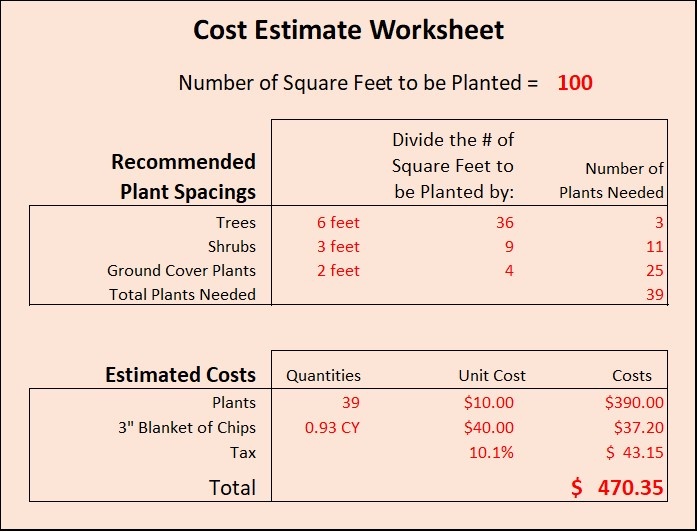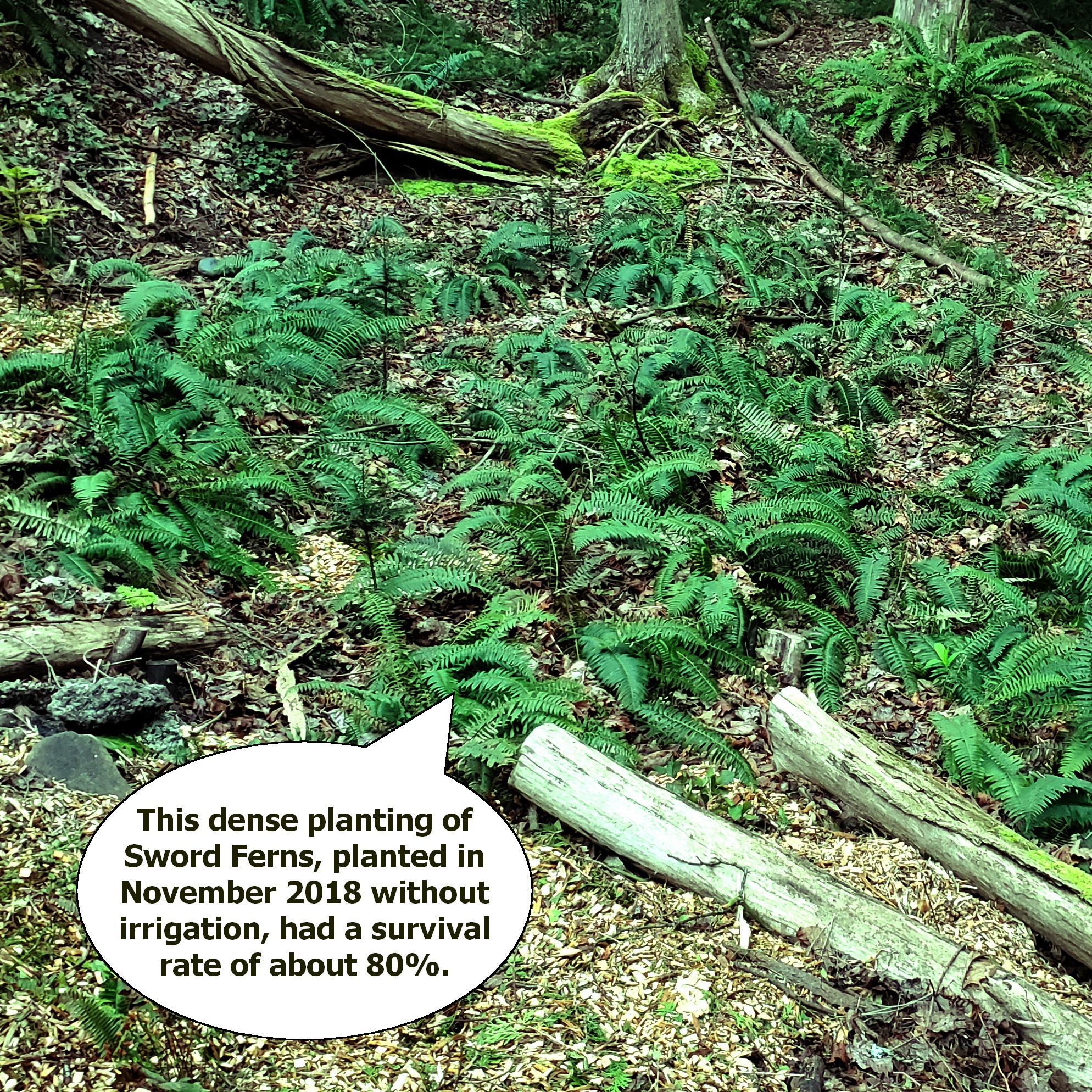The Sobering Cost of High-Density Planting
After invasive plants are removed, successful forest restoration depends on the re-establishment of natives, but plantings can be resource and labor intensive — especially dense plantings, which promote competition and deter weeds.
On some sites, natural regeneration will suffice, especially sites under a forest canopy with at least moderate numbers of existing native shrubs and ground cover. However, on sites that are mostly barren following the removal of invasives, acquiring and installing native plants may be desirable.
- The Green Seattle Partnership recommends dense plantings, especially for sites that lack access to irrigation or that have sandy soil (like we have in much of the Puget lowland).
- The Washington State Department of Transportation, when revegetating roadsides after highway projects, recommends dense plantings of native shrubs and trees designed to create a shaded canopy within 5-7 years.
- The Miyakawi Method, highly touted for being able to rapidly create a forest from scratch, calls for extremely dense plantings of 30-50 native plant seedlings per square meter.
Using the spacing guidelines from the Green Seattle Partnership and current retail prices from a local native plant nursery, I estimate that installing a dense planting of natives on a site measuring only 10’ by 10’ (100 square feet) would cost about $470.
The chart below shows how I came up with these numbers. The number of plants is based on the square feet needed to achieve the recommended spacings. For example, shrubs spaced 3 feet apart take up 9 square feet, and 11 shrubs would be needed to fill 100 square feet. Overall, 3 trees, 11 shrubs, and 25 ground cover plants (all in one-gallon pots) would be needed for the dense planting. A good installation would also include enough wood chips to provide a 3” deep blanket of mulch.
A significant amount of manual labor would be required as well. My average rate of installation is about 4 plants per hour, which includes digging holes, mudding in the plants, and mulching with chips. Thus the 39 total plants would likely take at least 10 hours to install.

These numbers are sobering for such a small space. To save money, you might consider using techniques like live-staking and plant-division to multiply the natives you already have. If you prefer to buy plants, consider removing invasives slowly — at an annual pace that matches your time and budget. For example, native plants can be added gradually as weed breaks around patches of invasives are incrementally tightened year after year.
You don’t have to be wealthy to restore your backyard forest, but it pays to consider the costs, explore alternatives, be patient, and think about your backyard forest restoration as an ongoing work in progress.
